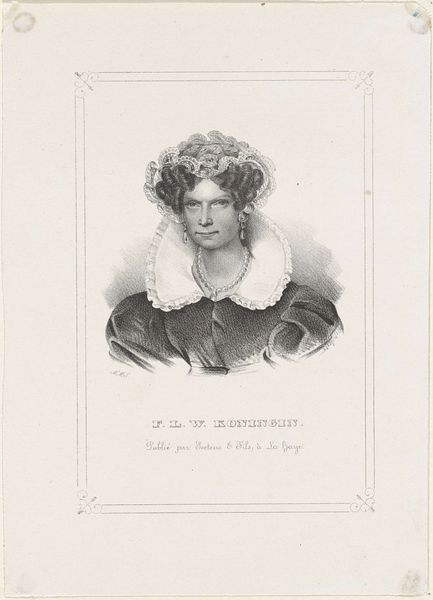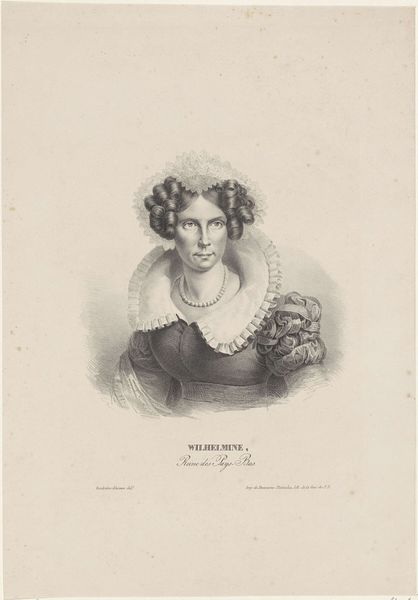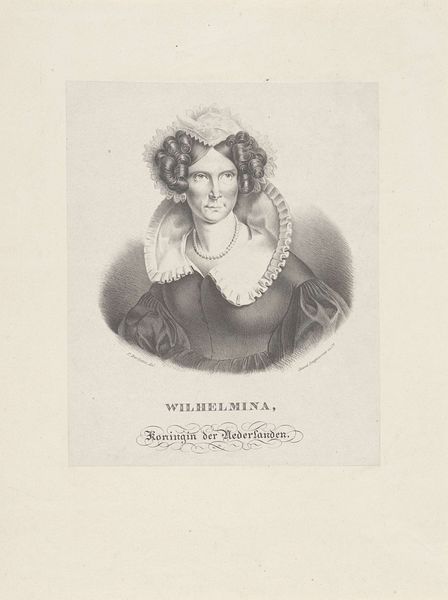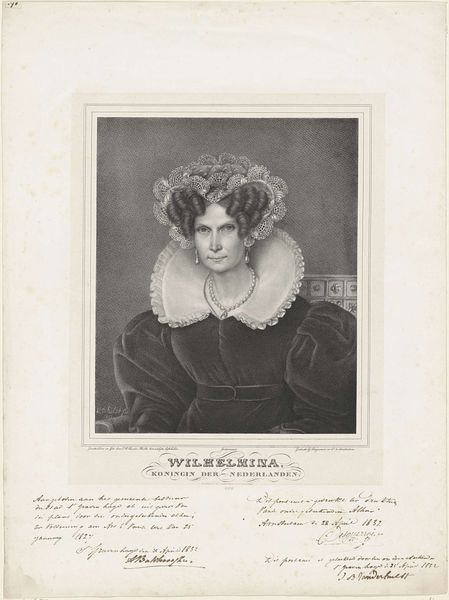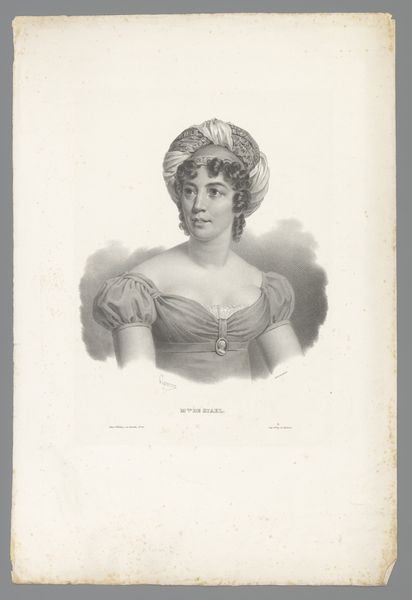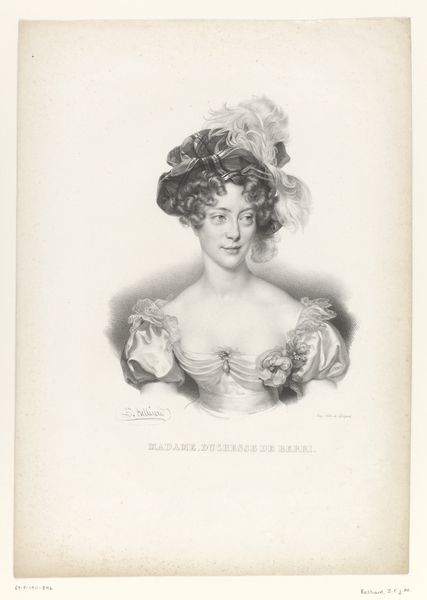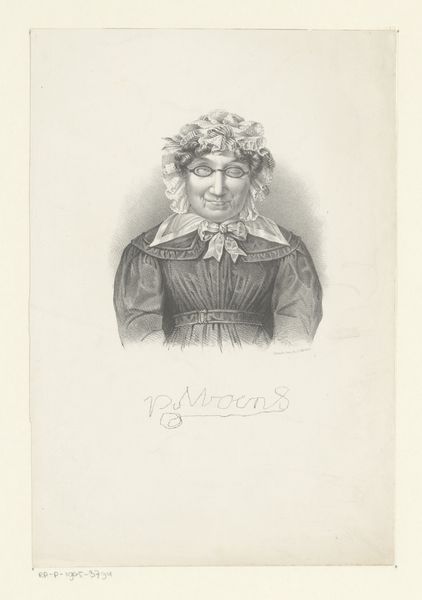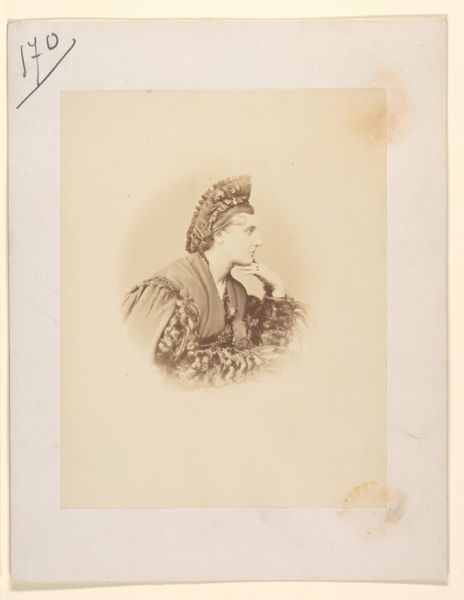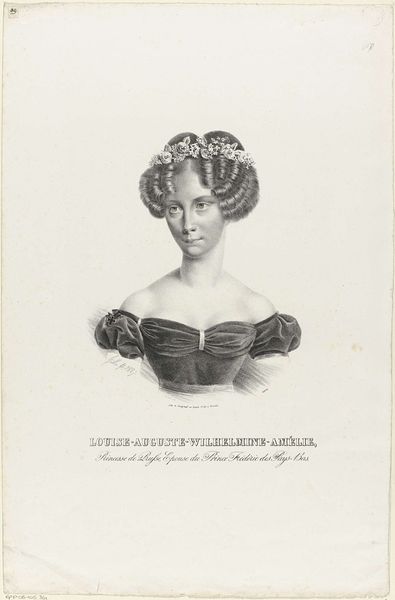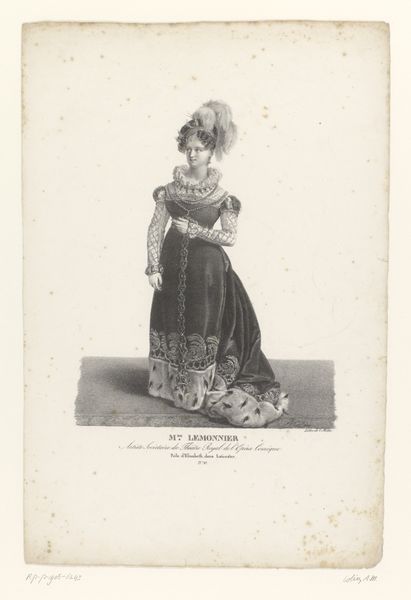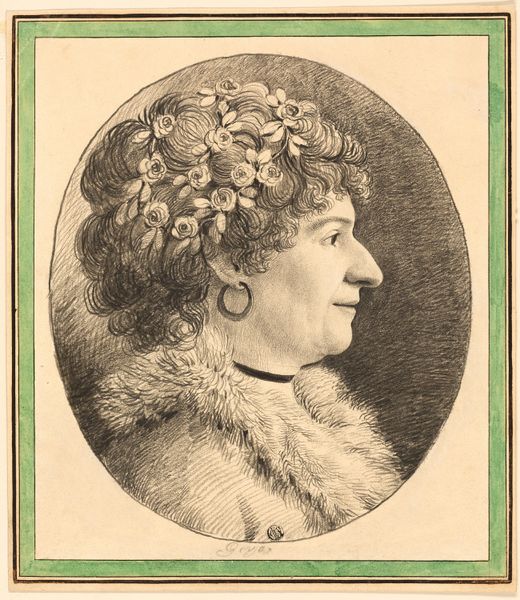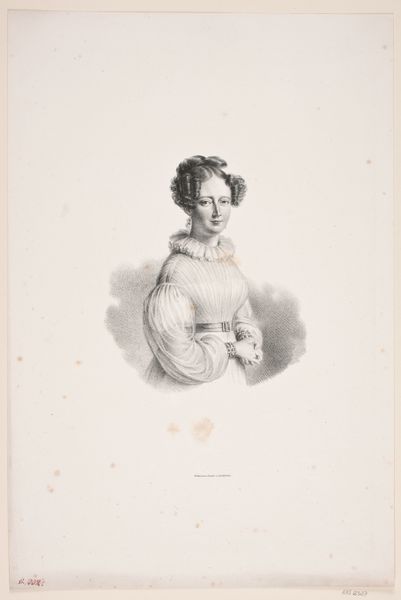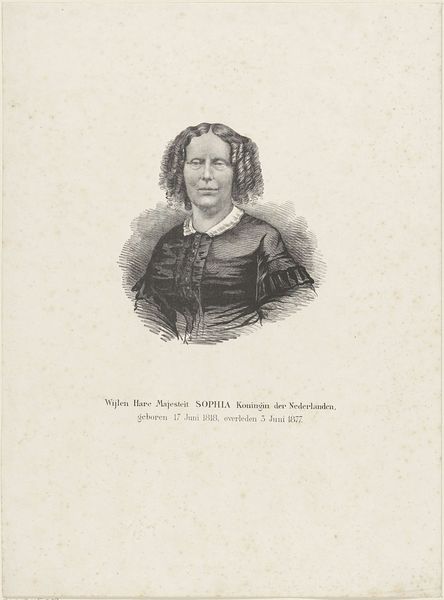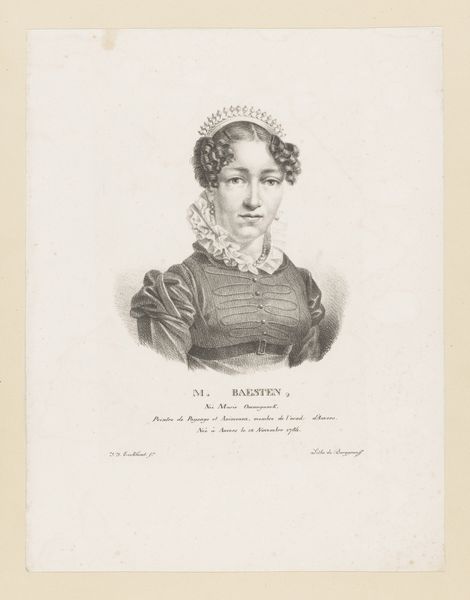
drawing, paper, pen, engraving
#
portrait
#
pencil drawn
#
drawing
#
neoclacissism
#
light pencil work
#
16_19th-century
#
paper
#
historical photography
#
pen
#
history-painting
#
engraving
Dimensions: height 271 mm, width 197 mm
Copyright: Rijks Museum: Open Domain
Editor: This is a portrait of Queen Wilhelmina of Prussia, created sometime between 1833 and 1836 by J.B. Clermans, using pen, pencil, and engraving on paper. There's a formality, a reserve in her expression. What do you see in this piece? Curator: Beyond the queen's formal representation, I notice a subtle dialogue of power and vulnerability. The delicate lace and pearls – symbols of status – are almost overwhelmed by the stark lines of the engraving. Look closely at her eyes. What stories do you think these historical depictions hold? Editor: It's almost like a mask, isn't it? The rigid collar and the elaborate headdress feel like they're hiding something. Is this typical of neoclassical portraits? Curator: The symbols within the work offer continuity, but their interpretation evolves. Consider the pearl necklace: Traditionally a symbol of purity, here, within this image, is it a display of wealth? How do you see the use of light and shadow contributing to this push and pull? Editor: The light definitely emphasizes her face, but the shadows around her shoulders make the lace collar and headdress stand out even more. They become the focal point, not necessarily her expression. It feels very intentional now that you mention it. Curator: Indeed. And does the historical context – a time of shifting political landscapes – alter how we perceive these symbols today? Does our memory and emotional understanding shift over time? Editor: Absolutely, considering the era adds a new layer to the visual language. It makes you wonder what future generations will interpret when they see it. Curator: Precisely. It prompts introspection about what stays constant and what evolves across time. Editor: I hadn't considered how much context can influence the way symbols resonate!
Comments
No comments
Be the first to comment and join the conversation on the ultimate creative platform.
